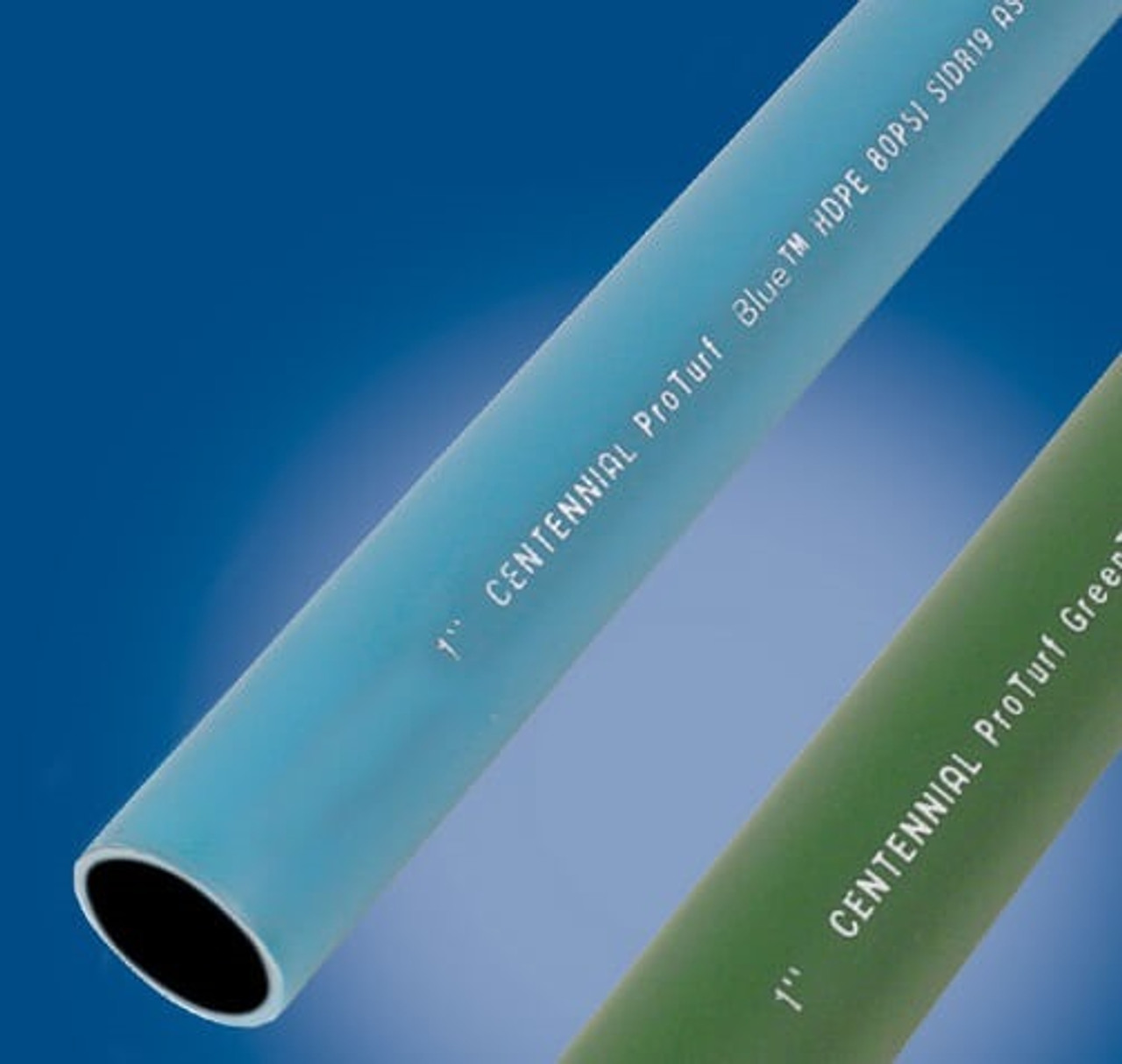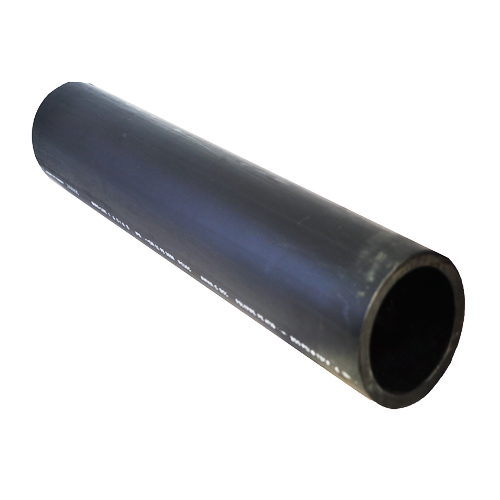How American Plastics HDPE Pipe Manufacturing Maintains Sustainability
Explore the Manufacturing Process Behind High-Quality HDPE Pipe and Its Applications
The manufacturing process of top notch HDPE pipes is complex and methodical. It starts with the option of raw materials that improve efficiency. Following this, ethylene goes through polymerization to form resin, which is after that formed through extrusion. Quality control is vital, guaranteeing that the last product satisfies stringent standards. Nevertheless, the journey of HDPE pipelines doesn't finish with production. Their applications across different sectors expose a broader importance worth examining.
Understanding HDPE: Residences and Advantages

High-density polyethylene (HDPE) is a functional thermoplastic understood for its toughness and resistance to different ecological variables. This material displays superb tensile stamina, making it appropriate for demanding applications. Its low-density framework adds to a light-weight item, promoting simplicity of dealing with and installment. HDPE also showcases remarkable resistance to chemicals, which minimizes degradation when revealed to extreme substances.
The material's reduced moisture absorption additionally improves its longevity, making it ideal for use in pipes and storage containers. Additionally, HDPE is immune to ultraviolet (UV) radiation, making certain that products preserve their stability even when exposed to sunlight. Its adaptability permits for the development of intricate forms without compromising stamina. The environmentally friendly nature of HDPE, commonly originated from recycled materials, includes to its appeal, advertising lasting practices in manufacturing. In general, these properties and advantages make HDPE a favored option for different industrial and consumer applications.
Raw Product Option for HDPE Production
The selection of raw products for HDPE manufacturing is essential to validate the end product meets the desired specs and high quality standards. High-density polyethylene (HDPE) is mainly generated from polymerized ethylene, stemmed from fossil gas such as natural gas or crude oil. The top quality of these feedstocks greatly influences the mechanical and thermal residential or commercial properties of the final HDPE.
Ingredients also play a considerable role in improving HDPE's efficiency, consisting of anti-oxidants, UV stabilizers, and colorants, which boost toughness and resistance to ecological aspects. The choice procedure must consider not only the chemical make-up of the raw products but likewise their processing characteristics to guarantee efficient production.
The sourcing of raw materials need to prioritize sustainability and compliance with ecological policies, as liable techniques are essential in today's market. Ultimately, careful resources option lays the foundation for producing premium HDPE pipelines appropriate for diverse applications.
The Extrusion Process: Forming HDPE Pipeline
The extrusion procedure plays an important role in forming HDPE pipes, beginning with careful material preparation techniques that ensure perfect circulation and consistency. Similarly vital is the layout of the die, which directly influences the last dimensions and surface area high quality of the pipeline. With each other, these factors contribute greatly to the effectiveness and top quality of HDPE pipeline production.
Material Prep Work Methods
Effective production of HDPE pipelines begins with meticulous product prep work methods, specifically the extrusion procedure. Throughout this phase, high-density polyethylene resin is first dried to get rid of moisture, making sure ideal flow qualities. The resin is then fed into the extruder, where it undergoes heating and melting, transforming into a viscous state. This home heating procedure is carefully regulated to keep the material's honesty and performance. The molten HDPE is compelled via a die, shaping it right into a continual pipe form. Correct temperature level management during extrusion is vital, as it directly affects the material's residential or commercial properties and the final product high quality. When shaped, the HDPE pipe is cooled and reduced to specified lengths, ready for succeeding processing and applications.
Die Style Relevance
Accuracy in die design plays a crucial function in the extrusion process of HDPE pipes. The die acts as the last shaping device, straight influencing the pipe's measurements, wall thickness, and surface area coating. A properly designed die warranties consistent product circulation, reducing defects such as irregularities and vulnerable points. The geometry of the die must be maximized to suit the specific residential or commercial properties of HDPE, including its thickness and thermal behavior during extrusion. In addition, the cooling price of the material as it travels through the die can significantly affect the pipeline's structural integrity. Subsequently, purchasing innovative die technology is vital for manufacturers aiming to create top quality HDPE pipelines that satisfy sector criteria and customer assumptions.
Top Quality Control Procedures in HDPE Production
Numerous factors influence the quality of HDPE pipeline manufacturing, efficient high quality control actions are vital to assure consistency and dependability in the last item (Pipe Manufacturing Midland TX). Secret high quality control techniques consist of strenuous material evaluation, confirming that the raw polyethylene fulfills established standards for pureness and thickness. Throughout the extrusion process, parameters such as temperature, stress, and cooling time are carefully monitored to maintain dimensional precision and architectural stability
Additionally, post-production screening is vital; manufacturers typically carry out hydrostatic tests to evaluate the pipe's strength and resistance to stress. Visual inspections for surface area problems better improve high quality assurance. Accreditation from pertinent requirements companies, like ASTM or ISO, supplies an added layer of trustworthiness. By executing these extensive quality assurance actions, manufacturers can minimize issues, improve efficiency, and make sure that the HDPE pipes satisfy the details demands of different applications, ultimately leading to consumer complete satisfaction and depend on in the item.
Applications of HDPE Pipeline Throughout Industries
HDPE pipes are made use of throughout different fields due to their longevity and flexibility. In water circulation systems, they guarantee effective shipment, while in wastewater administration, they supply trusted options for waste transportation. In addition, agricultural watering networks gain from HDPE's resistance to corrosion and versatility, making it an ideal choice for modern-day farming methods.

Water Circulation Systems
A substantial variety of markets count on high-density polyethylene (HDPE) pipelines for reliable water distribution systems. Known for their durability and resistance to deterioration, HDPE pipelines are extensively used in metropolitan water supply networks, agricultural irrigation, and commercial applications. Their light-weight nature helps with easy handling and setup, reducing labor costs and time. In addition, HDPE pipes can fit numerous stress degrees, making them suitable for both reduced and high-pressure systems. Pipe Manufacturing Midland TX. The flexibility of the material enables for seamless combination into existing framework, reducing the demand for considerable excavation. HDPE's resistance to chemical seeping guarantees that the water delivered stays safe and tidy, making it a perfect selection for maintaining the quality of drinkable water across different sectors.
Wastewater Monitoring Solutions
Reliable water circulation systems likewise lead the way for cutting-edge wastewater management services, where high-density polyethylene (HDPE) pipelines play a considerable role. Prominent for their longevity and resistance to rust, HDPE pipelines are excellent for carrying wastewater in numerous setups. Their adaptability permits very easy installation in complicated atmospheres, lessening the demand for considerable excavation. Additionally, HDPE's smooth indoor surface decreases rubbing, enhancing circulation rates and effectiveness. These pipes are likewise immune to chemical leaching, making sure that contaminants do not endanger the surrounding setting. Industries, towns, and therapy facilities increasingly depend on HDPE pipes for their integrity and long life, making them a recommended choice for contemporary wastewater management systems. This adaptability underscores the critical relevance of HDPE pipelines throughout numerous applications.
Agricultural Watering Networks
Agricultural irrigation networks benefit significantly from the usage of high-density polyethylene (HDPE) pipes, which offer effective and dependable water delivery to crops. HDPE pipes are lightweight, making them easy to transfer and set up, while their adaptability enables various arrangements in diverse surfaces. These pipelines show exceptional resistance to corrosion, chemicals, and UV radiation, ensuring durability in harsh agricultural environments. In addition, their smooth indoor surface lessens rubbing loss, optimizing water flow and decreasing power prices related to pumping. The durability of HDPE pipelines, frequently surpassing half a century, adds to reduce upkeep and substitute expenses. As a result, farmers increasingly depend on HDPE pipes to enhance watering performance and advertise sustainable farming methods, ultimately resulting in improved crop yields and resource preservation.
Future Trends in HDPE Pipeline Technology
As the need for sustainable and efficient framework grows, improvements in HDPE pipe modern technology are positioned to change numerous sectors. Arising patterns include the combination of clever modern technologies, such as sensors and IoT abilities, which promote real-time surveillance of pipe conditions, minimizing maintenance prices and preventing leaks. Furthermore, the growth of advanced production strategies, such as 3D printing, is making it possible for the production of complicated, tailored pipeline layouts that cater to specific project needs.
The focus on recycling and circular economy methods is driving the advancement of HDPE pipes made from recycled materials, improving sustainability. Boosted jointing methods, such as electro-fusion and mechanical fittings, are likewise boosting installation performance and reliability. The expanding emphasis on environmental laws is pressing suppliers to embrace greener production procedures, making sure that HDPE pipes not just satisfy sector standards however also foster a more lasting future for infrastructure advancement.
Regularly Asked Inquiries
Exactly How Does HDPE Compare to Various Other Plastic Materials?
HDPE outmatches several various other plastic materials relating to resilience, chemical resistance, and flexibility. Its low thickness and high tensile strength make it perfect for numerous applications, often going beyond options in both read more efficiency and long life.
What Are the Environmental Effects of HDPE Production?
The ecological impacts of HDPE manufacturing include greenhouse gas discharges, power usage, and possible air pollution from manufacturing procedures. Furthermore, incorrect disposal can lead to dirt and water contamination, raising worries about long-lasting ecological impacts.
Can HDPE Pipeline Be Reused?
Yes, HDPE pipes can be recycled. Many facilities approve used HDPE for processing, transforming it into new products. This recycling adds to sustainability initiatives, lowering plastic waste while preserving resources and energy in the manufacturing cycle.
What Is the Lifespan of HDPE Water Lines?

Exactly How Do Temperature Variations Influence HDPE Pipe Performance?
Temperature level variations significantly impact HDPE pipe efficiency, influencing versatility and toughness. High temperature levels can bring about softening, while reduced temperatures might cause brittleness, inevitably affecting the pipeline's durability and viability for different applications in diverse settings.